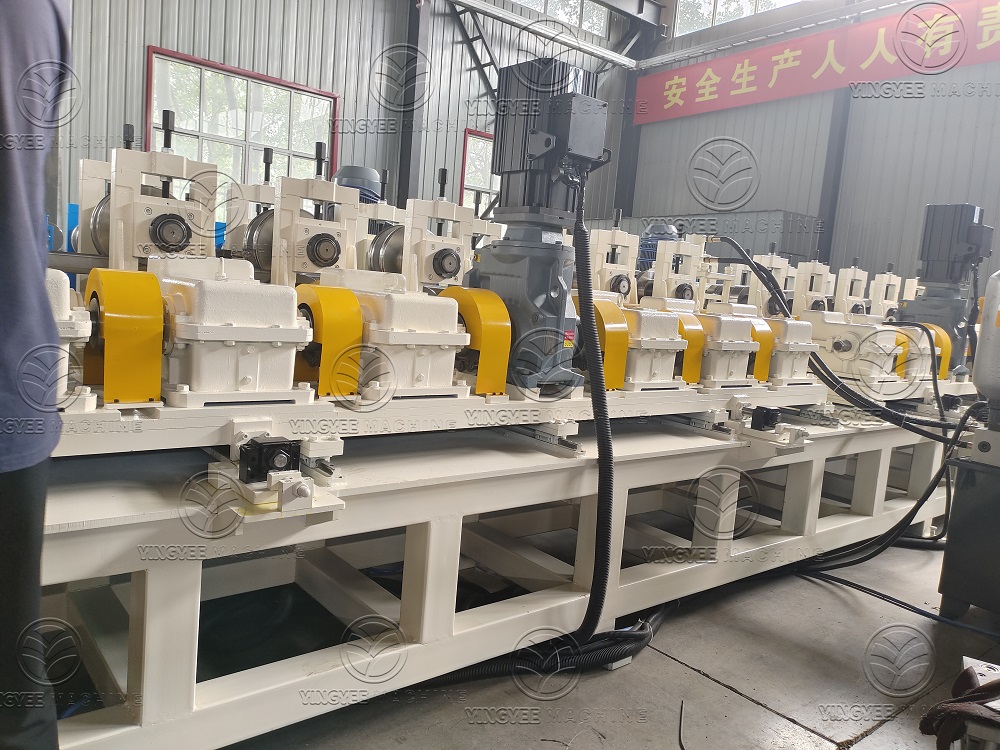
The Steel Long Span Roof Roll Forming Machine Enhancing Construction Efficiency
In modern construction, efficient and durable roofing solutions are paramount. The steel long span roof roll forming machine has emerged as a groundbreaking innovation that addresses the demand for robust roofing systems while minimizing production time and waste. This advanced machinery plays a crucial role in the prefabrication process of steel structures, offering numerous advantages that make it a preferred choice among builders and manufacturers.
Understanding the Roll Forming Process
Roll forming is a continuous process of bending metal into desired shapes through a series of rollers and dies. The steel long span roof roll forming machine specifically designs and fabricates long sheets of steel roofing panels, which are vital in various construction applications including industrial buildings, warehouses, and agricultural facilities. The process involves feeding a coil of steel through a set of rollers that gradually shape the metal into the final profile without cutting it, resulting in minimal waste and a uniform product.
Key Features of Steel Long Span Roof Roll Forming Machines
1. Versatility One of the standout features of these machines is their ability to produce a variety of profiles and lengths. Depending on the design specifications, manufacturers can quickly adjust the machine settings to create customized roofing panels, ranging from traditional corrugated profiles to modern sleek designs.
2. High Efficiency These machines are engineered for efficiency, capable of producing a significant number of panels in a short amount of time. This high throughput not only meets the fast-paced demands of construction projects but also reduces labor costs and accelerates project timelines.
3. Durability and Strength Steel is renowned for its strength-to-weight ratio, making it an excellent material choice for roofing. The long span roof roll forming machine utilizes high-quality steel coils that, once shaped, offer enhanced structural integrity. This results in roofs that can withstand harsh weather conditions, reduce heat transfer, and provide long-lasting performance.

4. Automation and User-Friendly Operation Many modern roll forming machines are equipped with computer numerical control (CNC) systems, allowing for automated adjustments and precision engineering. These systems enable operators to program complex designs easily, reducing errors during production and ensuring consistent quality.
5. Reduced Waste The efficiency of the roll forming process contributes to lower material waste. Since the machine shapes the metal from a continuous coil, there are fewer leftover scraps compared to traditional cutting methods. This eco-friendly aspect not only saves costs but also supports sustainable construction practices.
Applications in Construction
The applications of steel long span roof roll forming machines are vast. In industrial settings, they are commonly used for erecting warehouses and manufacturing facilities where large, open spaces are needed. The long panels minimize joints, reducing potential leak points and enhancing the roof's overall waterproofing capabilities.
Additionally, in agricultural construction, these machines create roofing for barns and storage units, where durability and resistance to environmental factors are critical. Similarly, in commercial construction, they are employed for large retail spaces and parking structures, where aesthetic appeal and strength are vital.
Conclusion
The advent of the steel long span roof roll forming machine has transformed the roofing industry, providing builders with an efficient, high-quality solution to meet the demands of modern construction. With their versatility, speed, and eco-friendly production process, these machines are indispensable tools for fabricators in a rapidly evolving marketplace.
Whether for industrial, agricultural, or commercial applications, the benefits of using steel long span roof roll forming machines are clear. As technology continues to advance, we can expect further innovations in roll forming machinery that will enhance efficiency, reduce costs, and contribute to more sustainable construction practices, paving the way for a stronger and more resilient built environment.